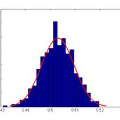This dissertation is based on a project co-founded by the Health Market Quality Program (now Rozetta Institute) and the Australian Institute of Health and Welfare. The overall objective of this work is to provide a framework and a tool for classification and clustering of homogeneous geographic areas based on aggregated population data. Thus, to enable the presentation and reporting of comparable information of individual units with peers, I develop the Homogeneity and Location indices to measure respectively the dispersion and central tendency of a categorical ordinal distribution. The advantages of such indices include statistical efficiency and a simple presentation of results. Our approach is founded on the general theory of probability distributions, and our aim is to provide a natural benchmark for a homogeneity measure in terms of what is a "high" and "low" concentration of a probability distribution. Currently, there is no accepted benchmark that could be used to assess the homogeneity of a categorical ordinal variable. In this work, the proposed statistical indices are used to assess the socioeconomic homogeneity of the commonly used SA3 Australia census geography and analyse the variation of GP attenders in the metropolitan area of Sydney. The approach can be used to classify any geographic area and explore variation across any specified geographical boundaries. The SA3 dataset and scripts (R/Python) to develop these indices have been made available on my GitHub account: https://github.com/lpinzari/homogeneity-location-index
翻译:----
本篇论文基于Rozetta研究所和澳大利亚卫生福利研究所共同资助的项目。其总体目标是提供一个框架和工具,基于聚合人口数据对同质地理区域进行分类和聚集,从而使得可比较的信息能够与同级单位展示和报告。我开发出同质性和位置指数,用于分别度量类别变量的分散程度和中心趋势,以此来使其在统计效率和结果呈现方面占有优势。我们的方法基于概率分布的一般理论,旨在提供基于概率分布浓度的同质度度量的自然基准线。目前,还没有被接受的基准线可以用于评估分类等级变量的同质性。在本研究中,所提出的统计指数被用于评估广泛使用的SA3澳大利亚人口普查地理,以及分析患者在悉尼大都市区的GP就诊情况的变异性。该方法可以用于对任何地理区域进行分类,并探索横跨任何指定地理边界的变异。SA3数据集和开发这些指数所用的脚本(R / Python)已在我的GitHub账户上公开:https://github.com/lpinzari/homogeneity-location-index



